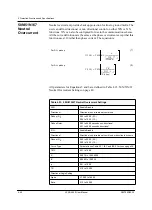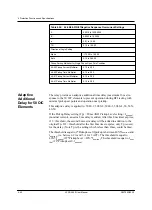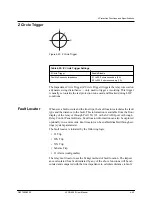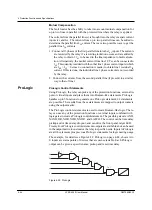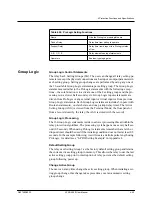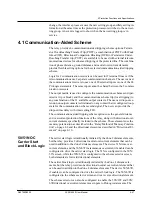
4 Protection Functions and Specifications
4-32
L-PRO 4000 User Manual
D02706R02.30
The loss of potential (LOP) function uses rate of change values for the positive
sequence voltage and current signal along with voltage and current supervision
to detect loss of potential conditions. This function operates very fast and been
field proven to block the distance elements during potential transferring be-
tween buses.
The function looks for a negative rate of change on the positive sequence volt-
age while determining if the positive sequence current is changing. A loss of
potential in itself should result in only a loss of voltage or a negative rate of
change of voltage. A fault results in a high rate of change of current as well. In
some rare cases there is a negative rate of change of fault current, therefore we
use an absolute rate of change of current. When the loss of potential condition
is detected, it is latched until all the 3-phase voltages are above 75% or a pos-
itive rate of change of voltage is detected. So the circuit detects a loss of poten-
tial that results in a voltage of less than 75%. Select positive and zero sequence
current blocking functions above the maximum load current, this ensures that
LOP does not pick up on fault.
A dropout timer has been added on the di/dt signal (in front of gate 169) to en-
sure that the di/dt signal will not reset earlier than the dv/dt signal. This change
improves the security of the algorithm in some particular fault situations.
If this function is enabled and an AC Loss of Potential takes place, an output
contact can be closed.
Loss of potential causes an alarm and distance elements will be blocked. Pos-
itive and zero sequence current settings provided will block this function for
faults. If voltage goes below 75% nominal (49.8 V) and the currents obtained
do not exceed the settings, the loss of potential will be initiated.
Table 4.15: 60 Loss of Potential Settings
60 Loss of Potential
Enable/Disable
I1 Blocking
0.5 to 50.0 A secondary (5 A)
0.1 to 10.0 A secondary (1 A)
3I
0
Blocking
0.5 to 50.0 A secondary (5 A)
0.1 to 10.0 A secondary (1 A)
Note that the positive and zero sequence current blocking level
should be set above the maximum line current. This function is fast
enough to provide blocking of the distance functions for schemes that
use bus potential inputs that are sometimes transferred without the
need for any external blocking inputs.
Содержание L-PRO 4000
Страница 1: ...L PRO 4000 Transmission Line Protection Relay User Manual Version 2 3 Rev 0...
Страница 2: ......
Страница 4: ......
Страница 8: ......
Страница 10: ......
Страница 14: ......
Страница 40: ......
Страница 50: ......
Страница 116: ......
Страница 146: ......
Страница 218: ......
Страница 252: ...Appendix B IED Settings and Ranges Appendix B 34 L PRO 4000 User Manual D02706R02 30...
Страница 260: ......
Страница 270: ......
Страница 302: ......
Страница 308: ......
Страница 310: ......
Страница 311: ...D02706R02 30 L PRO 4000 User Manual Appendix K 1 Appendix K Function Logic Diagram Diagram in plastic sleeve...
Страница 312: ......























